FBG Interrogation Method with High Resolution and Response Speed Based on a Reflective-Matched FBG Scheme
Abstract
:1. Introduction
2. Principle of the Proposed FBG Interrogation Method
2.1. Principle of the Interrogation Method

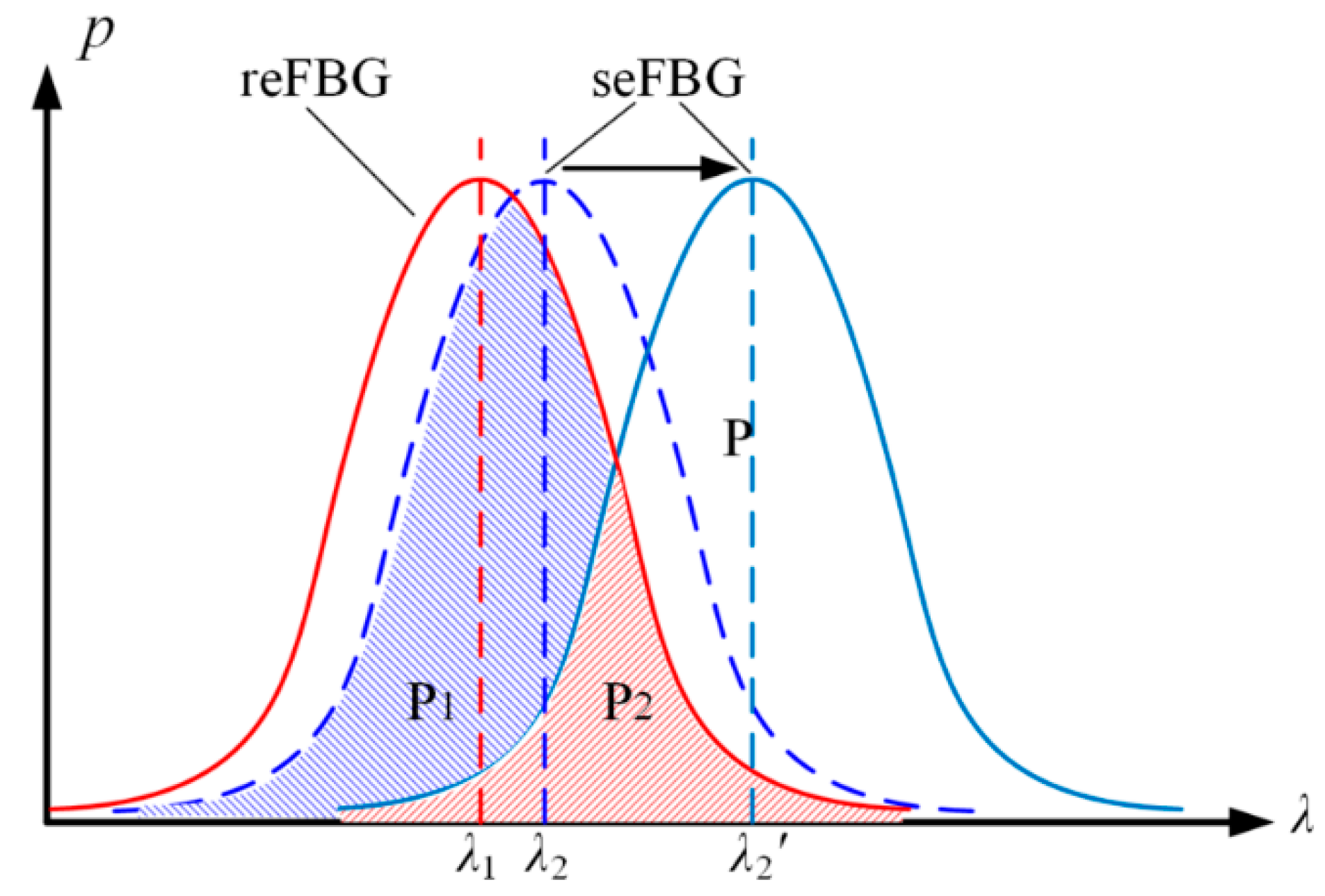
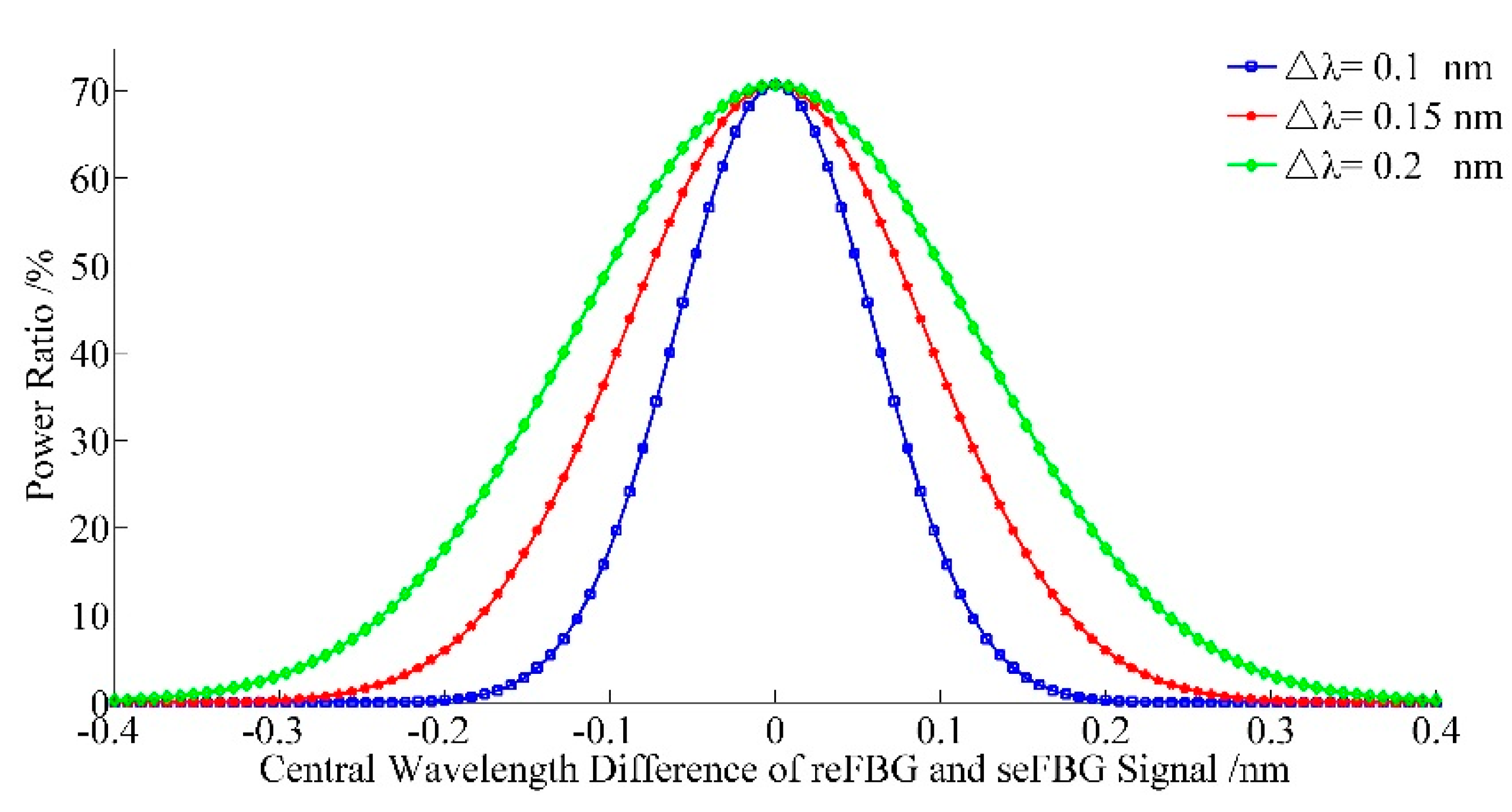
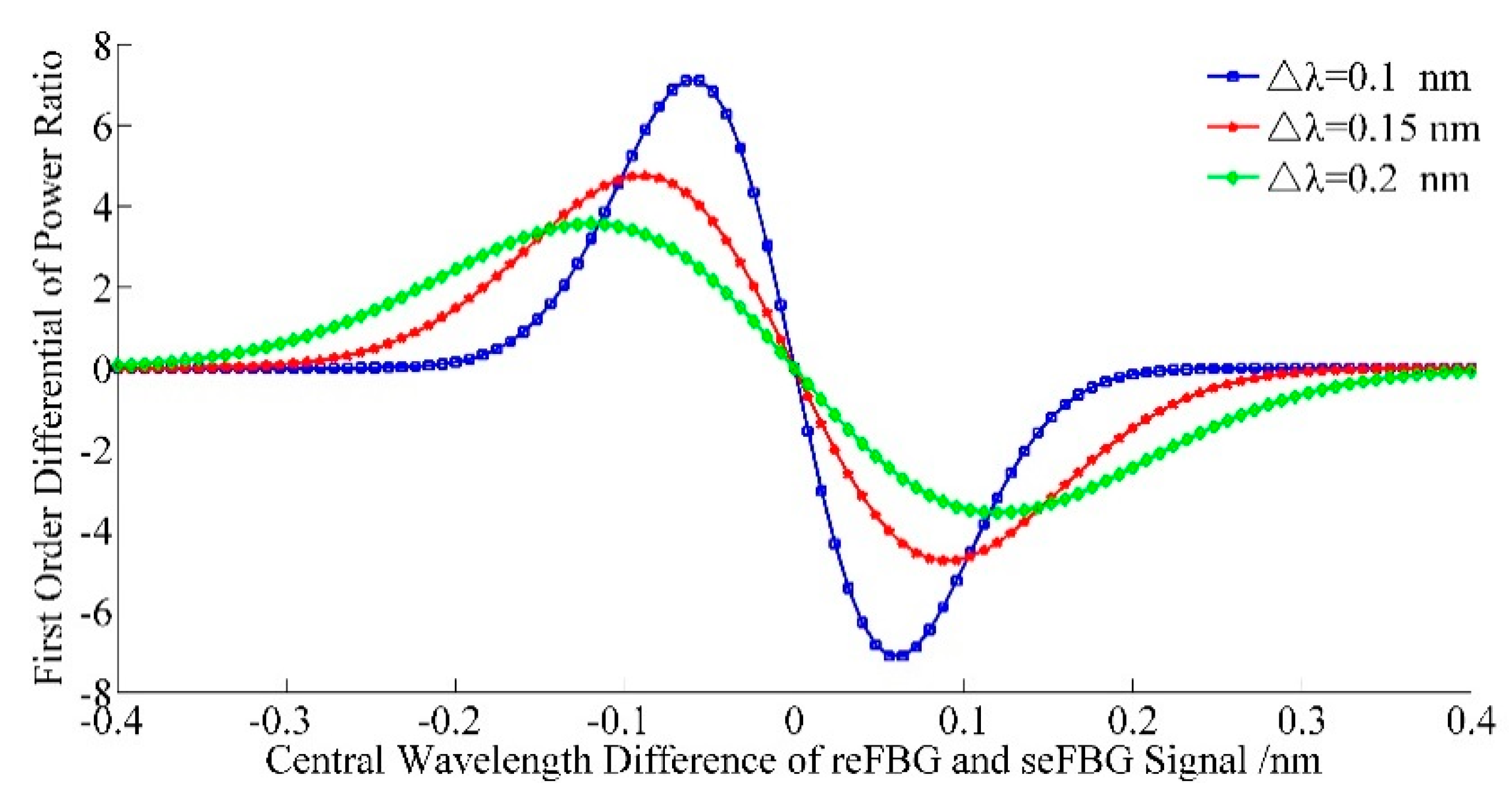
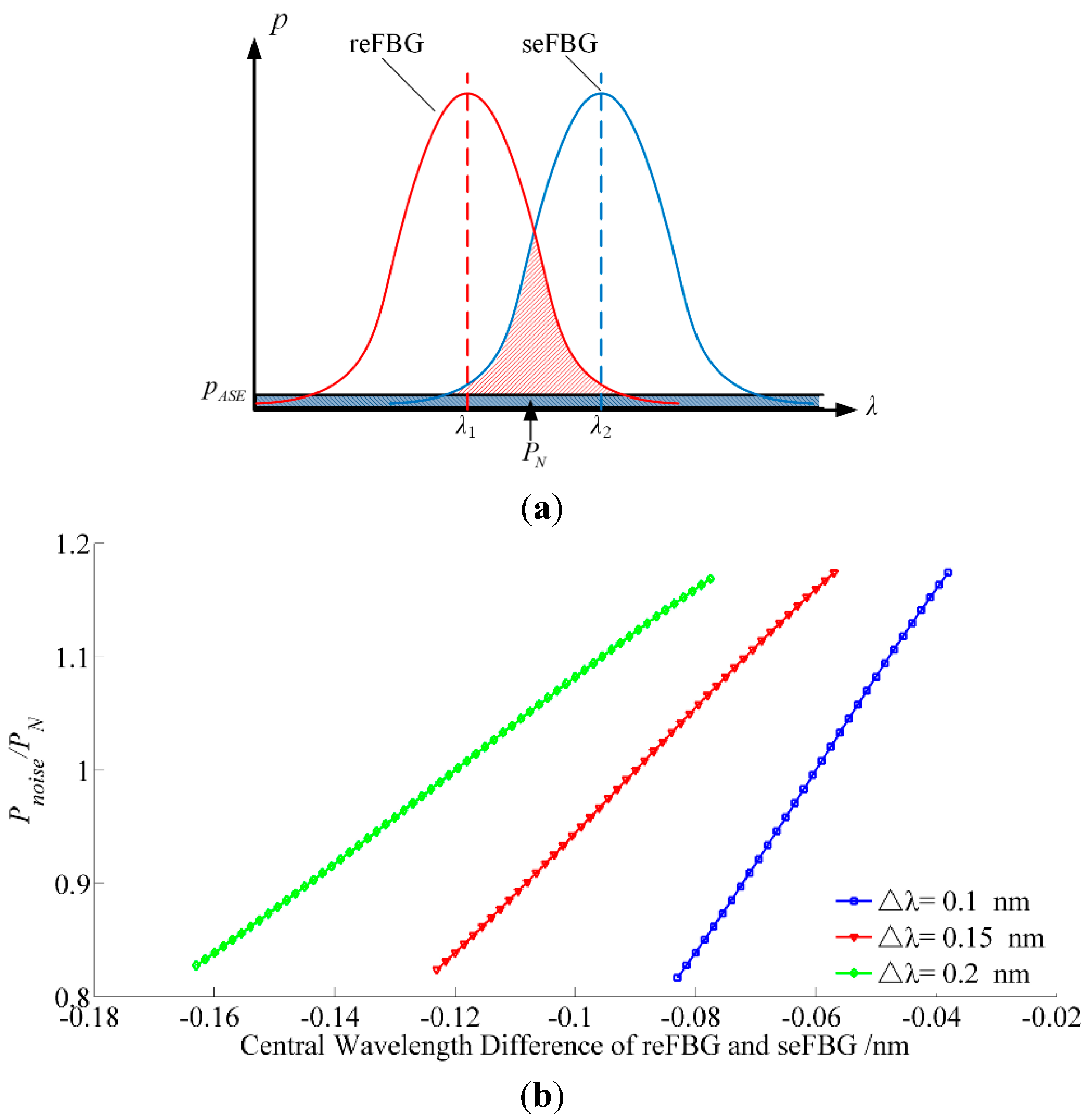
2.2. Analysis of the Relation between the FWHM and the Optimal Initial Matching Condition
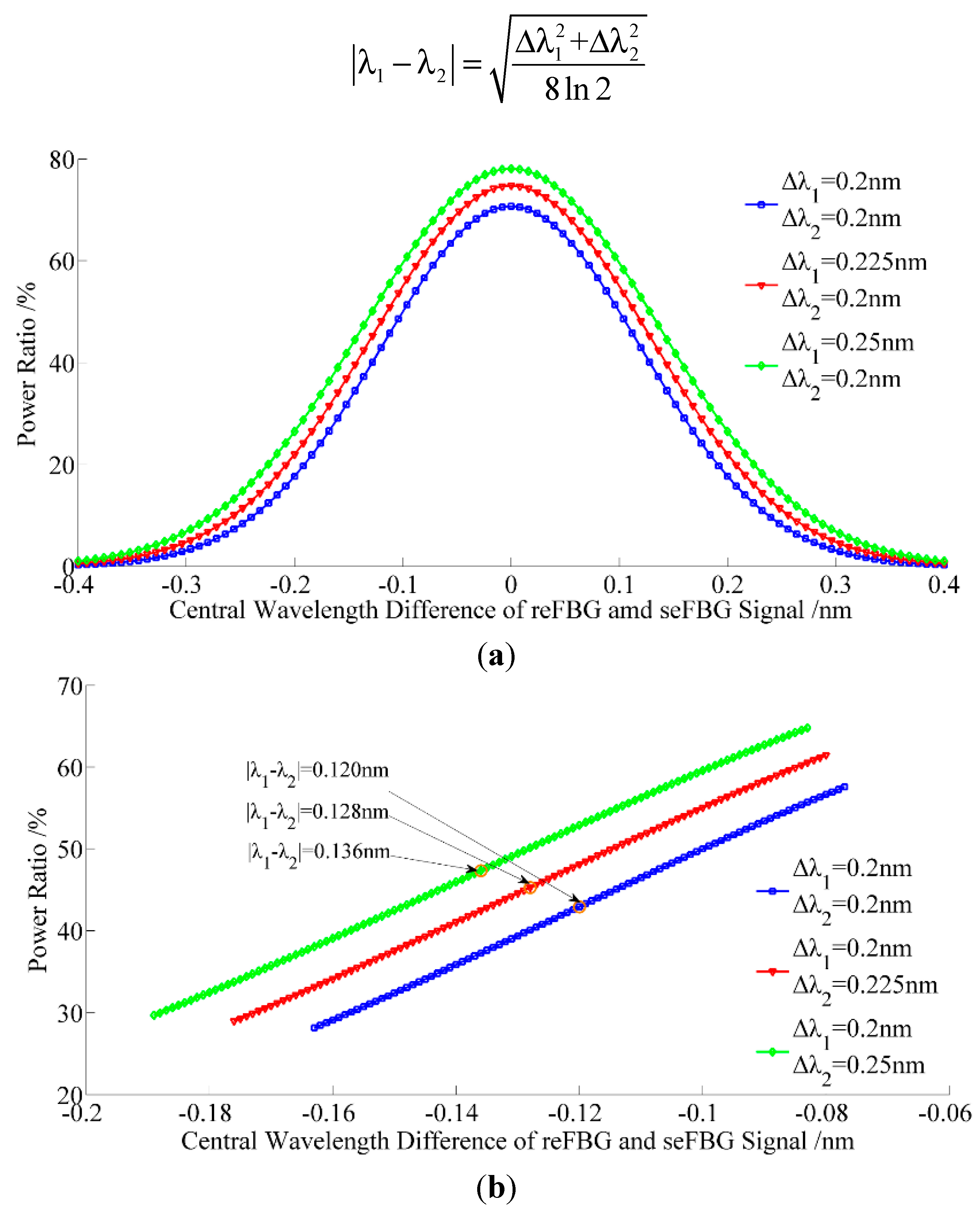
2.3. Principle of the Mechanical Adjustment to Satisfy the Optimal Initial Matching Condition
2.4. Principle of the Anti-temperature Perturbation of the Interrogation Method
3. Experiments and Results
3.1. Design of the Acquisition Circuit Board
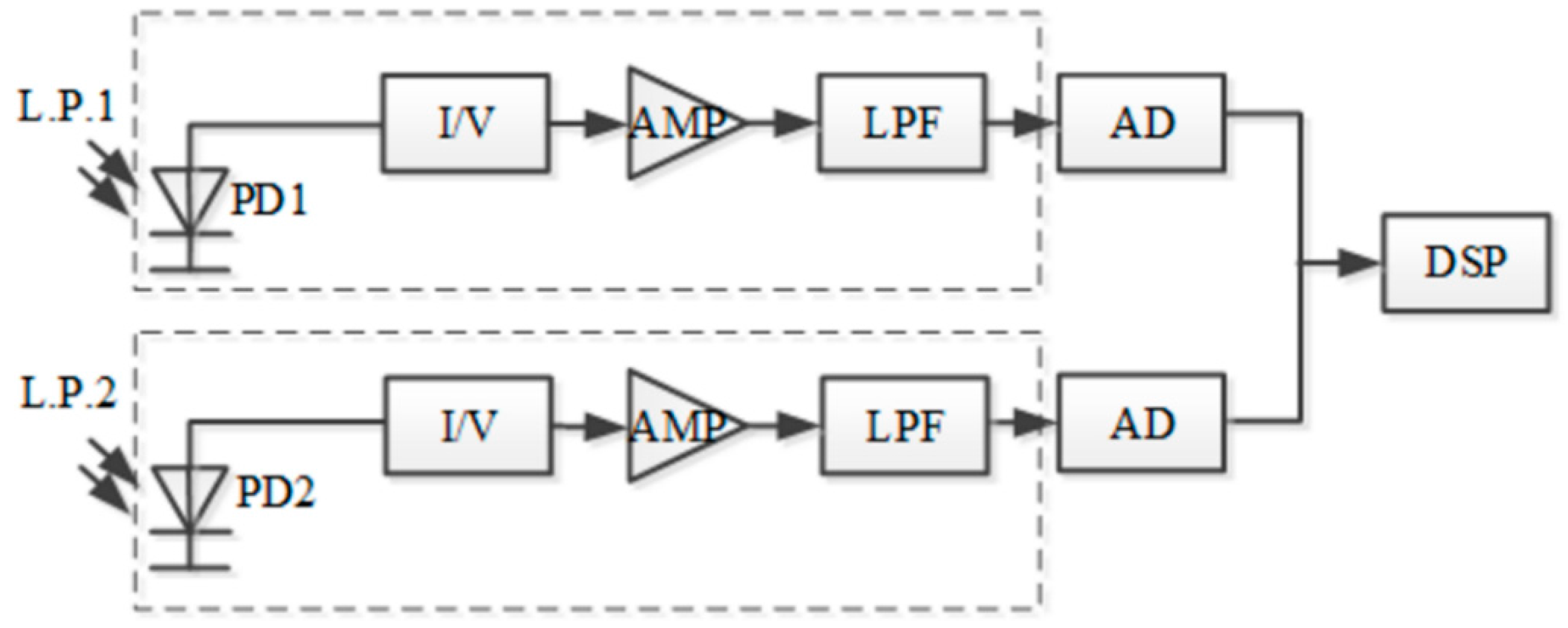
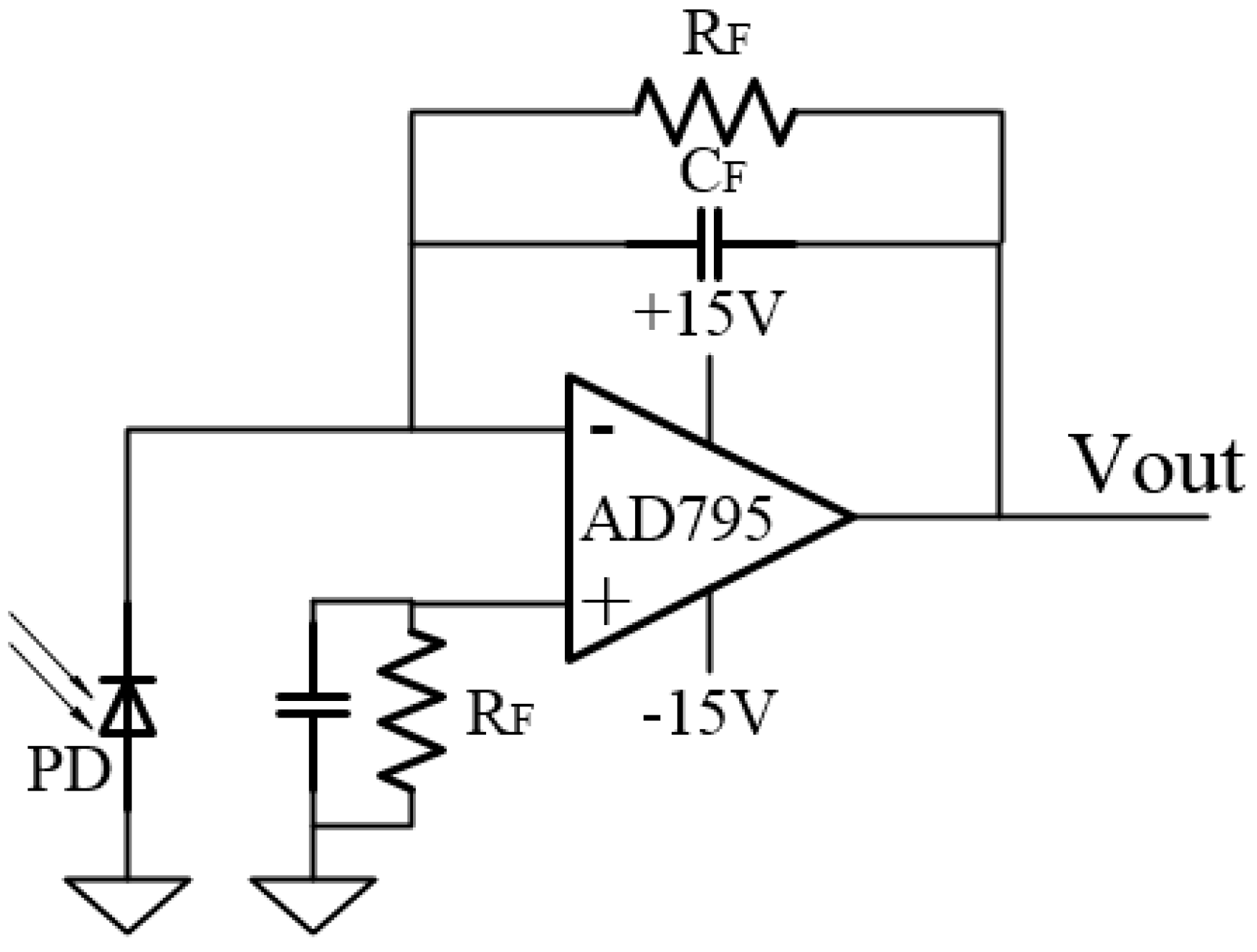
3.2. Experiments on the Performance of the Proposed FBG Interrogation Method
3.2.1. Mechanical Adjustment Experiments to Satisfy the Optimal Initial Matching Condition
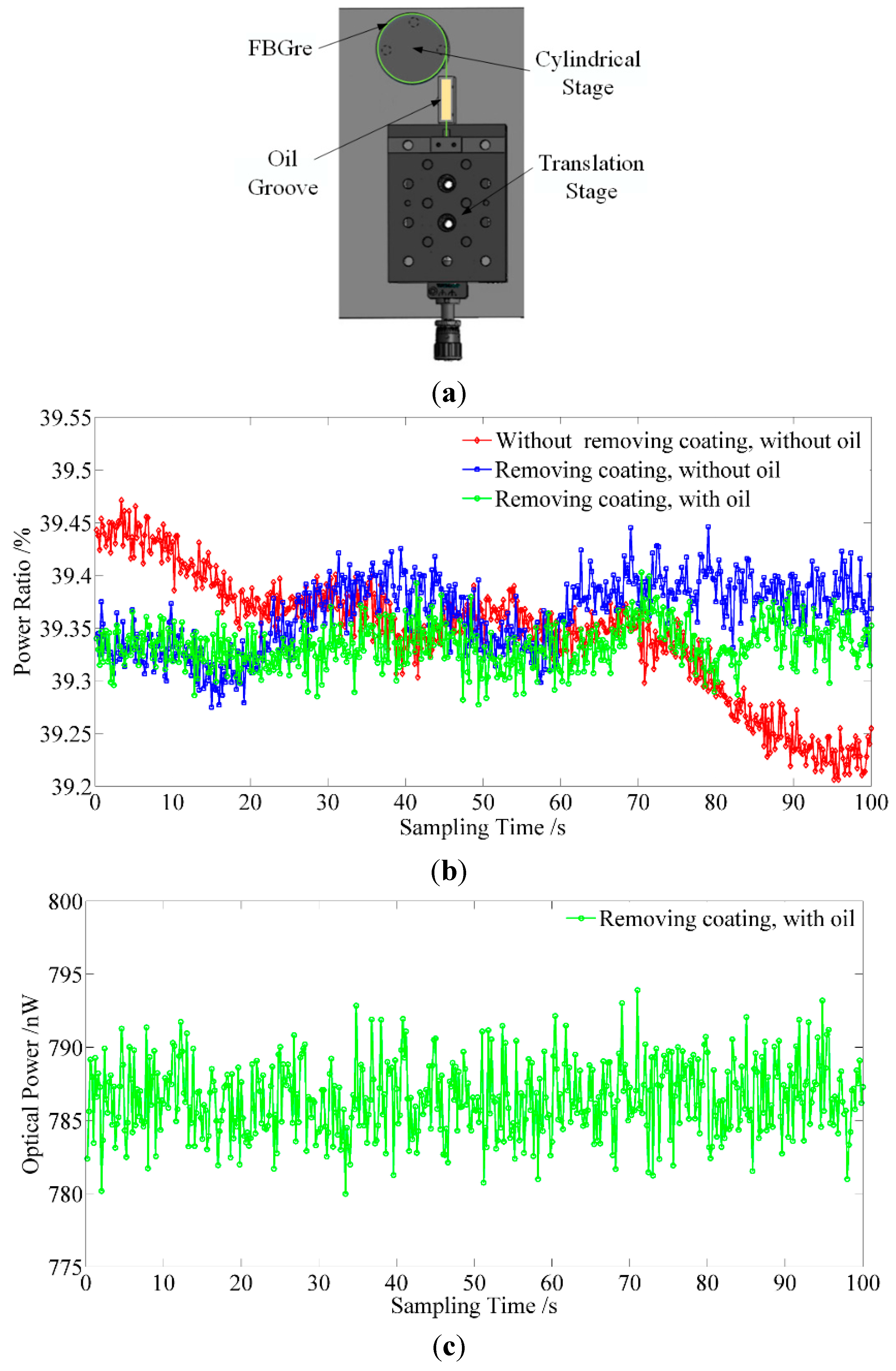
3.2.2. Experiment on the Optical Power Resolution of the Acquisition Circuit Board
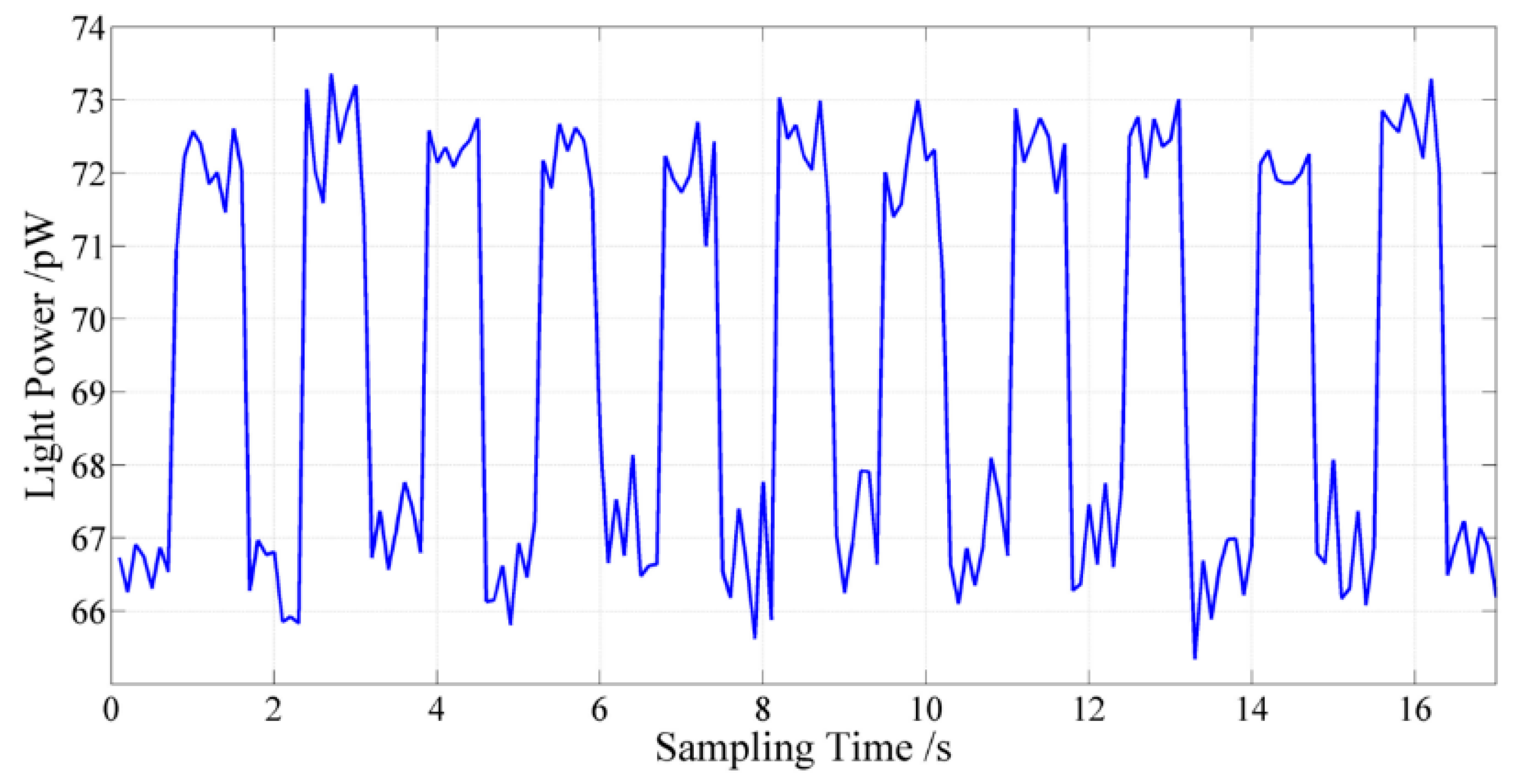
3.2.3. Experiment on the Linearity of the Proposed Interrogation Method under the Optimal Initial Matching Conditions
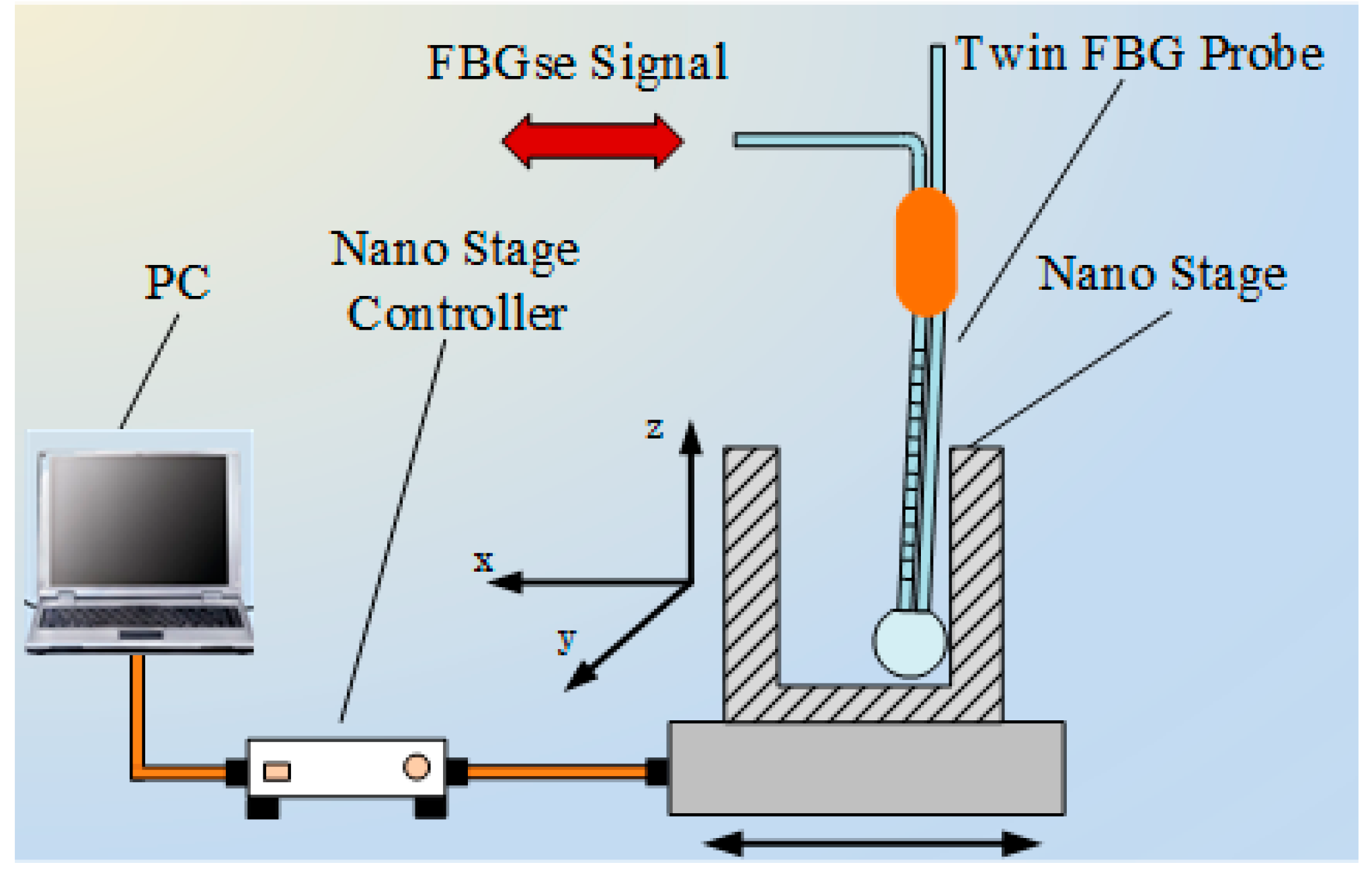
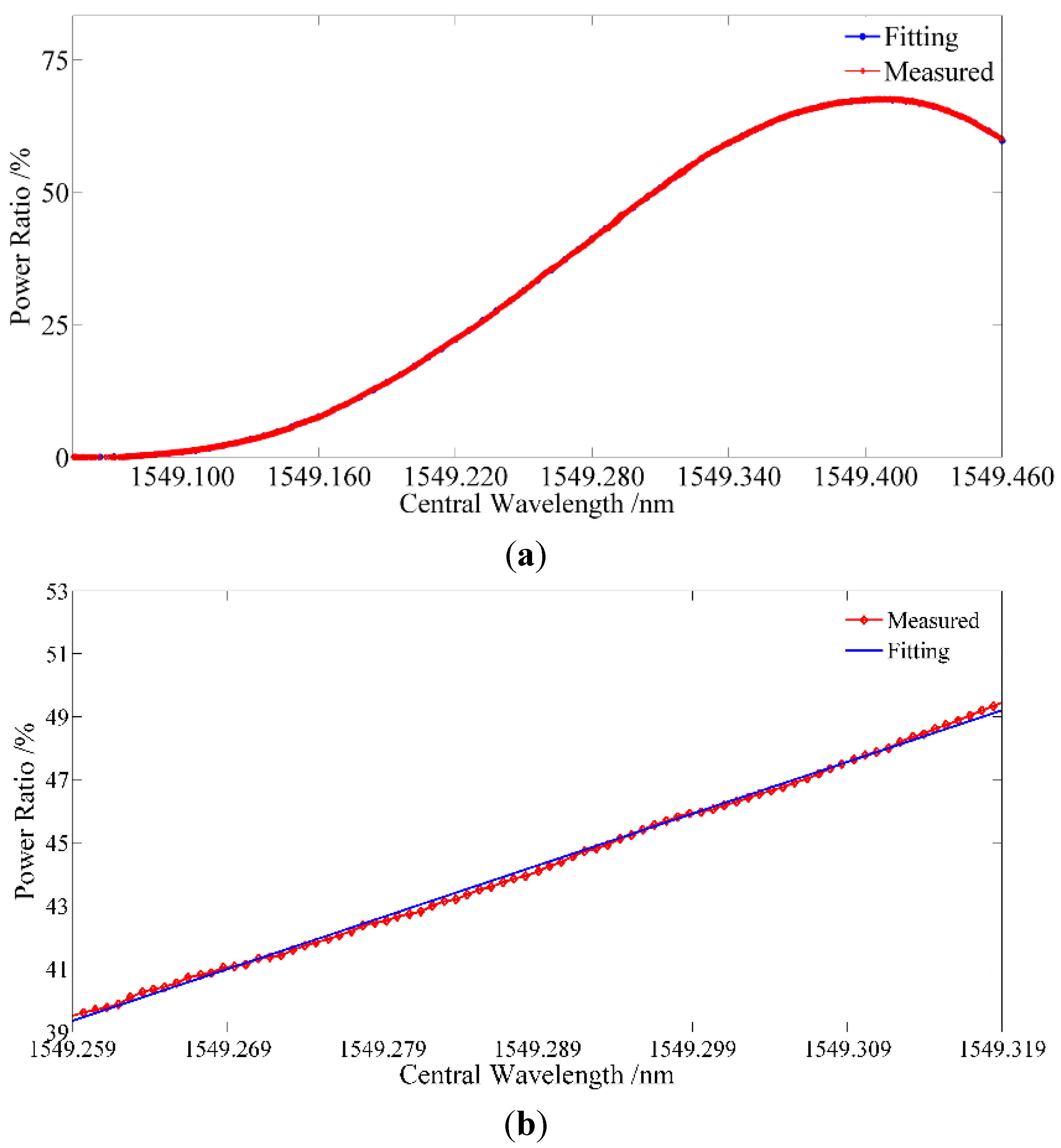
3.2.4. Experiment on the Wavelength Resolution

3.2.5. Experiment on the Frequency Response

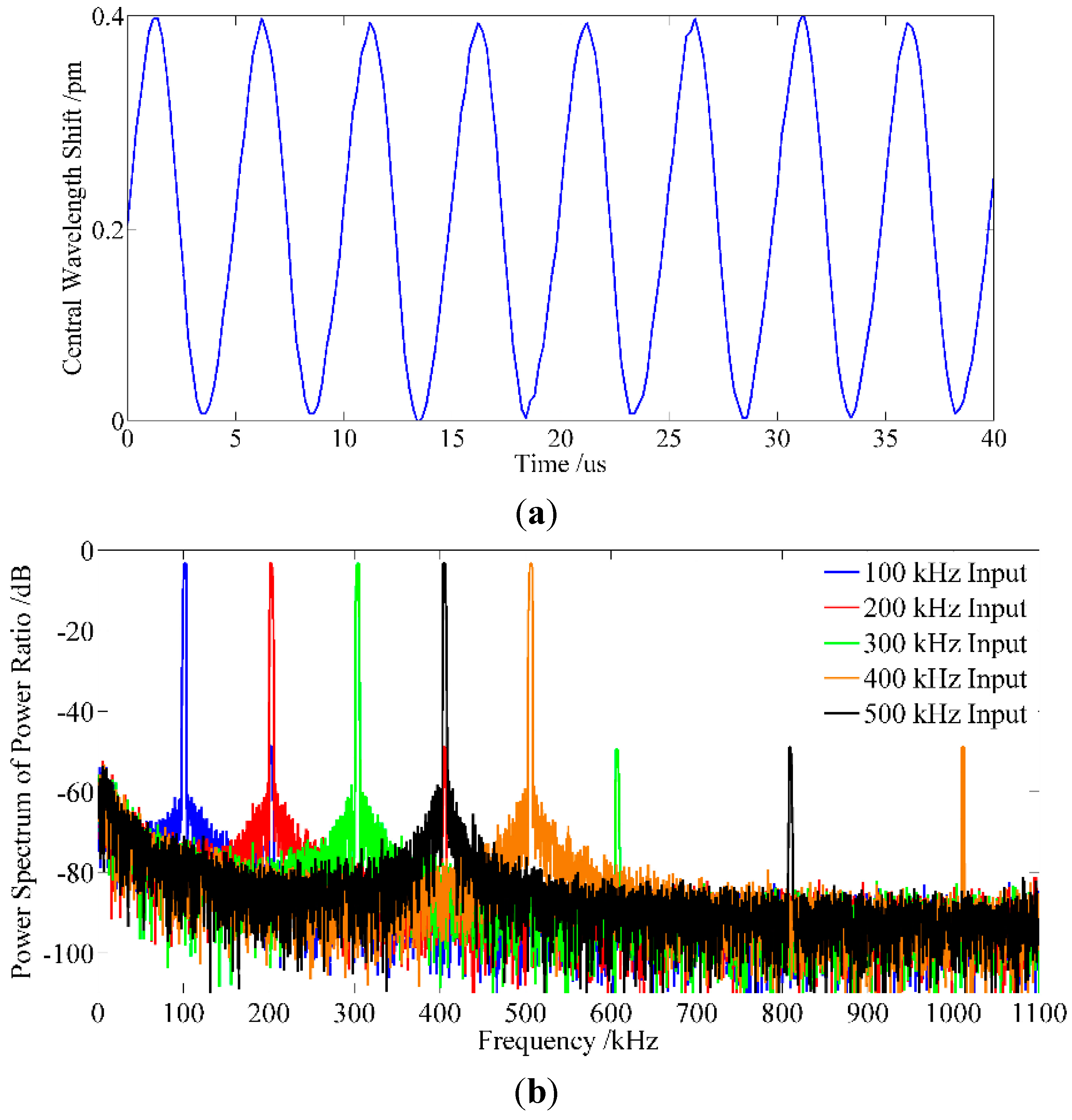
3.2.6. Experiment on the Anti-temperature Perturbation Performance of the Proposed Interrogation Method

4. Conclusions
Acknowledgments
Author Contributions
Conflicts of Interest
References
- Wild, G.; Hinckley, S. A fibre bragg grating sensor as a receiver for acoustic communications signals. Sensors 2011, 11, 455–471. [Google Scholar] [CrossRef] [PubMed]
- Cui, J.; Feng, K.; Hu, Y.; Li, J.; Tan, J. A Twin Fiber Bragg Grating Probe for the Dimensional Measurement of Microholes. IEEE Photonics Technol. Lett. 2014, 26, 1778–1781. [Google Scholar] [CrossRef]
- Kim, S.T.; Park, Y.; Park, S.Y.; Cho, K.; Cho, J.R. A Sensor-Type PC Strand with an Embedded FBG Sensor for Monitoring Prestress Forces. Sensors 2015, 15, 1060–1070. [Google Scholar] [CrossRef] [PubMed]
- Takuma, M.; Hisada, S.; Saitoh, K.; Takahashi, Y.; Kobayashi, Y.; Kadono, A.; Murata, A.; Iwata, S.; Sasaki, T. Acoustic Emission Measurement by Fiber Bragg Grating Glued to Cylindrical Sensor Holder. Adv. Mater. Sci. Eng. 2014, 2014. [Google Scholar] [CrossRef]
- Wu, Q.; Okabe, Y.; Saito, K.; Yu, F. Sensitivity distribution properties of a phase-shifted fiber Bragg grating sensor to ultrasonic waves. Sensors 2014, 14, 1094–1105. [Google Scholar] [CrossRef] [PubMed]
- Kahandawa, G.C.; Epaarachchi, J.; Wang, H.; Lau, K.T. Use of FBG sensors for SHM in aerospace structures. Photonic Sens. 2012, 2, 203–214. [Google Scholar] [CrossRef] [Green Version]
- Potts, C.; Allen, T.W.; Azar, A.; Melnyk, A.; Dennison, C.R.; DeCorby, R.G. Wavelength interrogation of fiber Bragg grating sensors using tapered hollow Bragg waveguides. Opt. Lett. 2014, 39, 5941–5944. [Google Scholar] [CrossRef] [PubMed]
- Ma, Y.; Wang, C.; Yang, Y.; Yan, S.; Li, J. High resolution and wide scale fiber Bragg grating sensor interrogation system. Opt. Laser Technol. 2013, 50, 107–111. [Google Scholar] [CrossRef]
- Yang, G.; Guo, J.; Xu, G.; Lv, L.; Tu, G.; Xia, L. A novel fiber Bragg grating wavelength interrogation system based on FP etalon. In Proceedings of the SPIE/COS Photonics Asia, Beijing, China, 9–11 October 2014. [CrossRef]
- Kim, H.; Song, M. Linear FBG interrogation with a wavelength-swept fiber laser and a volume phase grating spectrometer. In Proceedings of the 21st International Conference on Optical Fibre Sensors (OFS21), Ottawa, ON, Canada, 17 May 2011. [CrossRef]
- Lobo, A.B.; Ferreira, L.A.; Santos, J.L.; Jackson, D.A. Analysis of the reflective-matched fiber Bragg grating sensing interrogation scheme. Appl. Opt. 1997, 36, 934–939. [Google Scholar] [CrossRef]
- Chan, C.C.; Gao, Y.J.; Lau, K.T.; Ho, H.L.; Zhou, L.M.; Jin, W. Characterization of crosstalk of a TDM FBG sensor array using a laser source. Opt. Laser Technol. 2001, 33, 299–304. [Google Scholar] [CrossRef]
- Zhang, B. Development of Sandglass Shape FBG Sensor to Reduce Cross Sensitivity Effect. Int. J. Opt. 2013, 2013. [Google Scholar] [CrossRef]
- Zhang, X.; Alemohammad, H.; Toyserkani, E. Sensitivity alteration of fiber Bragg grating sensors with additive micro-scale bi-material coatings. Meas. Sci. Technol. 2013, 24. [Google Scholar] [CrossRef]
- Kim, S.; Kwon, H.; Yang, I.; Lee, S.; Kim, J.; Kang, S. Performance of a Distributed Simultaneous Strain and Temperature Sensor Based on a Fabry-Perot Laser Diode and a Dual-Stage FBG Optical Demultiplexer. Sensors 2013, 13, 15452–15464. [Google Scholar] [CrossRef] [PubMed]
© 2015 by the authors; licensee MDPI, Basel, Switzerland. This article is an open access article distributed under the terms and conditions of the Creative Commons Attribution license (http://creativecommons.org/licenses/by/4.0/).
Share and Cite
Cui, J.; Hu, Y.; Feng, K.; Li, J.; Tan, J. FBG Interrogation Method with High Resolution and Response Speed Based on a Reflective-Matched FBG Scheme. Sensors 2015, 15, 16516-16535. https://doi.org/10.3390/s150716516
Cui J, Hu Y, Feng K, Li J, Tan J. FBG Interrogation Method with High Resolution and Response Speed Based on a Reflective-Matched FBG Scheme. Sensors. 2015; 15(7):16516-16535. https://doi.org/10.3390/s150716516
Chicago/Turabian StyleCui, Jiwen, Yang Hu, Kunpeng Feng, Junying Li, and Jiubin Tan. 2015. "FBG Interrogation Method with High Resolution and Response Speed Based on a Reflective-Matched FBG Scheme" Sensors 15, no. 7: 16516-16535. https://doi.org/10.3390/s150716516
APA StyleCui, J., Hu, Y., Feng, K., Li, J., & Tan, J. (2015). FBG Interrogation Method with High Resolution and Response Speed Based on a Reflective-Matched FBG Scheme. Sensors, 15(7), 16516-16535. https://doi.org/10.3390/s150716516





